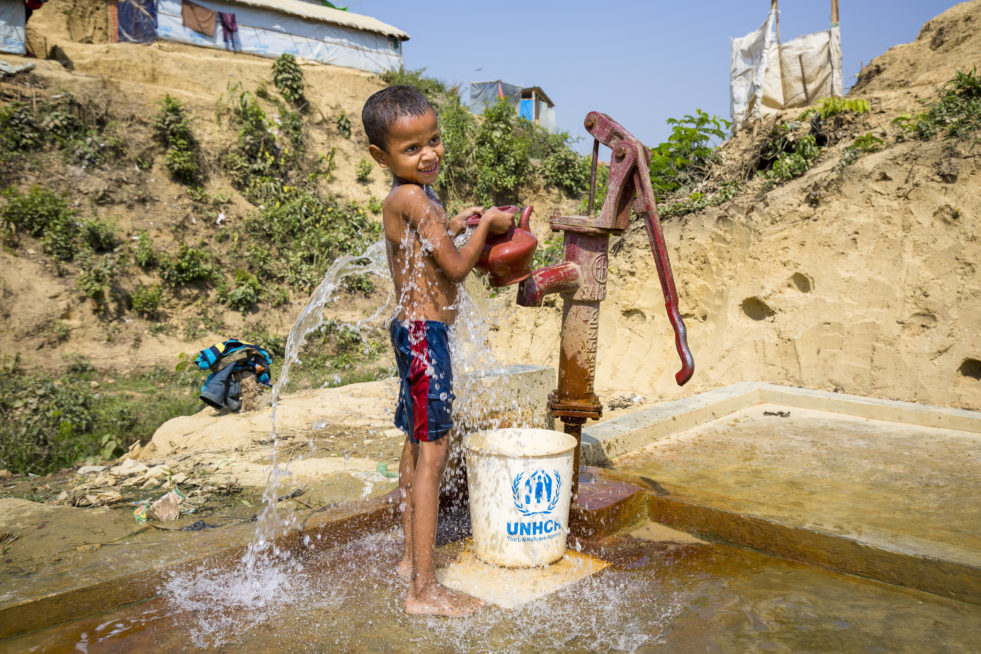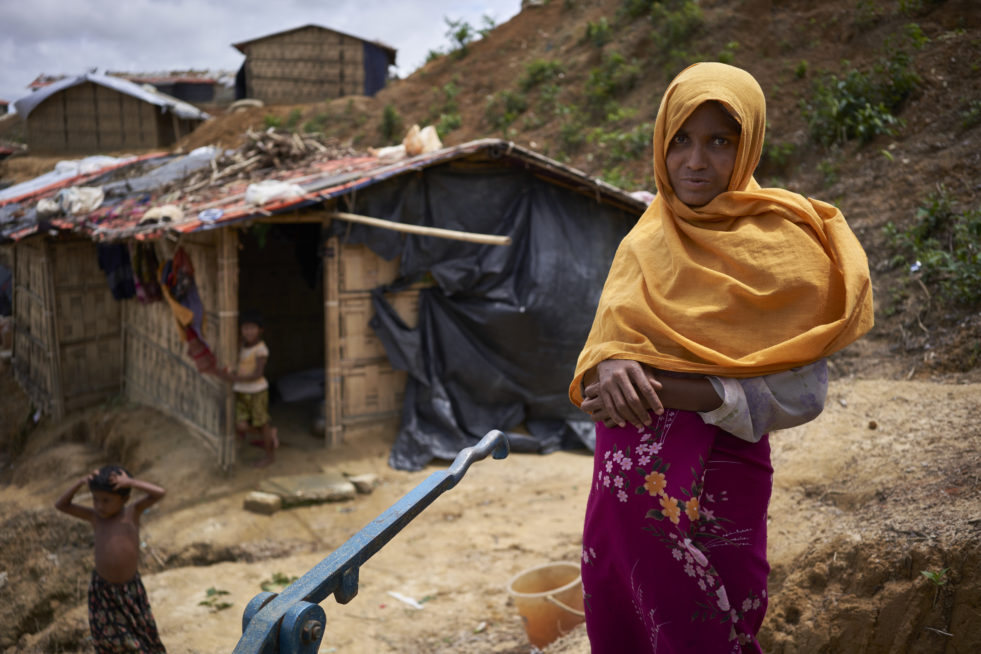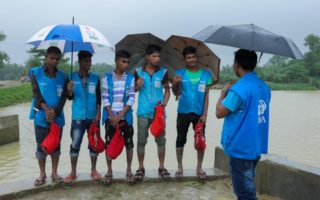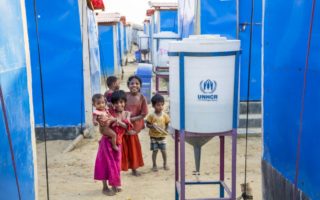
A Rohingya boy fills a bucket and kettle at a standpipe in Kutupalong camp. © UNHCR/Roger Arnold
After arriving in the Cox’s Bazar district of Bangladesh, Rohingya refugees found themselves living in crowded areas, coping with strained sanitation infrastructure and water supplies.
Sura and her family were among them.
Like thousands of Rohingya, she was forced to flee the outbreak of violence in Myanmar. Armed forces descended on her village in Tomrow, burning shelters.
“I saw some of my relatives killed. I fled to save my children,” said Sura.
It took more than three weeks to reach safety. Sura, her husband and their six children arrived in Cox’s Bazar in September 2017. With support from UNHCR, Sura and her family settled on a small plot of land with a makeshift shelter. Still, she faced a fresh obstacle: ready access to water.
It took her three hours every day to collect water. She would traverse the hilly terrain of Kutupalong refugee settlement, walking along steep pathways to reach a water pump where lines were extremely long.

Sura poses for a photograph next to a newly installed water pump outside her shelter in Camp 17 Kutupalong Expansion Site for Rohingya refugees in Ukhia, Cox’s Bazar District, Bangladesh. © UNHCR/David Azia
Although challenges remain, life has changed for the better in Bangladesh’s Rohingya settlements. Over the past two years, UNHCR and its partners have built 679 tube wells with easy-to-use water pumps.
“Today, it takes me a bit over a minute to walk from my house to the water point,” says Sura.
Efforts to effectively provide water, sanitation, and hygiene (WASH) services require daily effort to ensure everything is in working order and that health risks are mitigated, especially during the long monsoon season.
UNHCR and its partners have trained 677 WASH field staff and volunteers to provide information on health risks and disease prevention, conduct outreach for hygiene—including handwashing—and perform repairs on sanitary facilities and water infrastructure as needed.
This form of support means a lot to refugee mothers like Sura.
“Thanks to UNHCR, the well is close by, and we also have access to latrines and showers.”
While UNHCR has helped facilitate her day-to-day activities, Sura looks forward to a much different—and brighter—future.
“I want to return to Myanmar, with peace, so we can have our own home and our own land again.”
What UNHCR is doing
Working with the Bangladesh government, UNHCR is focusing efforts to provide refugees and host communities with proper WASH resources, reducing their vulnerability to diseases and establishing more dignified living conditions.
UNHCR is expanding its projects across Cox’s Bazar, building thousands of WASH facilities and installing 14 chlorinated water networks to facilitate access to safe water supplies.





